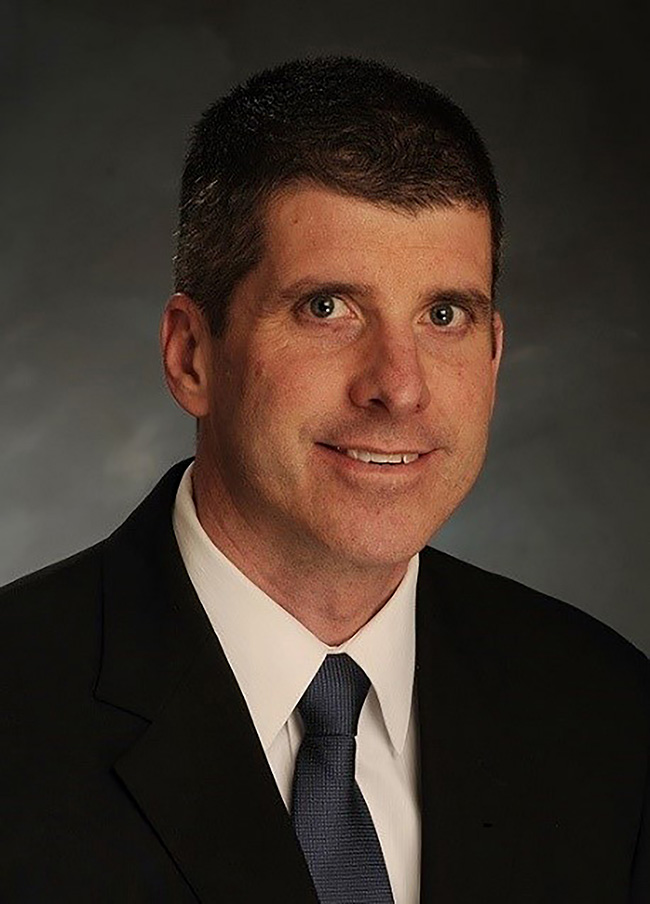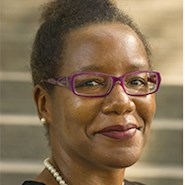Edited by Margaret M. Mitchell

Christopher T. Senseney, Ph.D., P.E., M.ASCE, is an associate teaching professor in the Department of Civil, Environmental and Architectural Engineering at the University of Colorado Boulder. Senseney, along with several other instructors in the school of engineering, teaches GEEN 1400, Engineering Projects, a 10-section course that offers freshmen an introduction to engineering through a series of projects performed in interdisciplinary teams. He teaches the section that emphasizes civil and architectural engineering.
Senseney discusses with Civil Engineering his section’s signature bridge project and how it is used to build the critical and professional skills students will need throughout their careers.
Briefly describe GEEN 1400, Engineering Projects.
GEEN 1400, Engineering Projects is an introduction to engineering through a series of projects completed in four- to five-person teams. The three-credit-hour course, required for all freshman engineering students at the university, operates with approximately 30 students per section. Depending on the background of the instructor, each of the approximately 10 sections of the course will emphasize one of the engineering disciplines, e.g., mechanical engineering, electrical engineering, civil and architectural engineering, etc.
Traditionally, the course has focused on designing and developing products through prototyping, preliminary design review, manufacturing, and customer feedback. This type of product design methodology is very relevant to electrical, mechanical, and aerospace engineering programs, but it was not as appropriate for civil and architectural engineering, in which larger-scale projects are the norm.
CU’s Department of Civil, Environmental and Architectural Engineering decided to create one section of the GEEN 1400 course with a more direct application to civil and architectural engineering and the types of projects that these engineers generally work on. Most of the students who enroll in this section of the course are civil or architectural engineering majors, but some are majoring in other engineering disciplines or are undeclared.
For your section, student teams must build a balsa wood bridge with a lighting system and other requirements. Tell us about that.
One of the team projects requires students to design and construct a 32 in. long truss bridge using balsa wood pieces with three different cross-sectional dimensions. I provide each group with a simple structural analysis software package that analyzes the truss bridge design alternatives that the groups develop. They must maximize their bridges’ strength-to-weight ratios using the least amount of balsa wood possible. The project simulates a pedestrian bridge that crosses over a highway reconstruction project in urban Denver.
This type of project has been performed in many college introductory engineering courses and even in some STEM high school courses. However, we added a twist by requiring each group to design and fabricate a lighting system for their bridge. At the end of the semester, the groups showcase their bridges and lighting systems at the class’s Design Expo, where judges and the public can evaluate the bridges from our section as well as the projects from other sections of the course. In one of the classes after the Design Expo, students test their bridges to failure in a load test frame.
The competition for the best strength-to-weight ratio is intense.
What are the goals for the project?
The goals are to apply an iterative process to improve a design, learn how to rely on other team members to give and receive help, and apply technical skills to produce a design that considers a range of economic, environmental, and societal contexts.
What makes the project innovative?
The most innovative part of the project is the requirement to design and build a lighting system for their bridges. The lighting system must incorporate parts from their electronics kits (they include sensors and small LED lights) and should include some of the concepts learned in a basic circuitry workshop taught in the course. They are advised that the lighting system must have at least one ‘environmental sensor.’
However, the type, purpose, and size of the sensor are left open-ended for them to decide. The bridge's lighting system design must reflect that the bridge will be in an urban setting. All lighting designs must incorporate a core theme of pedestrian safety. Then, without ignoring pedestrian safety, they are asked to integrate into their designs one of four secondary themes: artistic (a visual focal point for the neighborhood), energy efficiency, reduced light pollution, or accessibility.
How does the project incorporate engineering habits of mind?
The course and this project incorporate several engineering habits of mind, including creative problem-solving, visualizing, and improving. For the creative problem-solving aspect, we remind students that there is no one correct design. In fact, the more creative a solution is, the more likely it will earn the highest scores from the judges at the Design Expo.
For the visualization aspect, they must imagine how a small-scale bridge and lighting system might project onto a full-scale bridge. They also have to determine how light distribution, glare experienced by pedestrians or drivers of cars below, installation, and maintenance affect their lighting systems. They must also visualize how the bridge will look as they walk toward and across it in terms of their state of visual adaption and how the lighting might change over time as they travel across the bridge.
In terms of improving, the students must develop different structural designs in the analysis software to determine the most efficient truss shape and distribution of member cross sections to optimize the strength-to-weight ratio. For most groups, this iteration usually comes down to trial and error.
How does the project help students build teamwork, communication, and critical thinking skills?
They will need to employ all these skills to successfully complete this project. Most groups divide work into subtasks: bridge design, bridge construction, and lighting design/construction. These three subtask teams must communicate regularly with each other since the lighting system will be mounted on the bridge, and the location of the structural members will dictate where the lighting components can be mounted.
Also, factors like bridge height and width will impact where lights and access ramps should be placed.
Explain the ethical and diversity, equity, and inclusion components of the project.
Another goal of the project is to recognize the need for engineers to make informed judgments that consider the impact of engineering solutions in economic, environmental, and societal contexts. We talk about the local conditions surrounding this pedestrian bridge and that residents from the neighborhood on one side of the highway will be using this bridge to travel across it to a neighborhood, store, or school.
We also discuss how this highway, originally constructed in the 1950s, separated a vibrant community at a time when highways were being constructed within and across disadvantaged communities in cities throughout the country. The pedestrian bridge would help rejoin these communities, and it could serve as a visual focal point for the neighborhood and as a symbol of connection between communities that were once separated.
We discuss the need to make the bridge and the lighting accessible to all individuals, including those with a mobility challenge or physical disability. The approach ramps to the bridge and the associated lighting for those ramps must comply with Americans with Disabilities Act guidelines, at a minimum.
For future iterations of the project, we plan to incorporate an element of community dialogue. We are developing a role-play exercise of a town hall meeting in which the students play the roles of city council officials, city planner, design engineer, contractors, community organizers, and the general public. In the town hall meeting, we will talk through issues like historical injustices, community perspectives of the bridge, light pollution, traffic, and design alternatives.
What has surprised you most about the projects?
The creativity in the students’ lighting systems and environmental sensors is amazing. Some groups had a sensor that was light sensitive and would only allow the lights to come on once a certain level of darkness was achieved. Others had a pressure sensor built into the ‘deck’ of their bridge to detect weight on the bridge. One group had an ultrasonic sensor that would detect how far an object (in this case a pedestrian) was located from the sensor.
The lights — connected to the ultrasonic sensor and mounted on the bridge — would come on in the same location as the ‘pedestrian,’ as it traveled across the bridge. This team placed a tiny model of a pedestrian on the end of a stick to demonstrate their lighting system during the Design Expo.
It is rewarding to see them dive into this project and come up with some really creative solutions.
What do you hope students will take away from the project and the class?
We want them to understand that design is a team sport. In the real world, design and engineering usually involve many team members who need to collaborate to solve a problem. They will need to call on these skills in their academic and future careers.
Is there anything you’d like to say that I didn’t ask about?
It can be difficult for teachers to come up with ideas for student projects that involve multiple disciplines and where the solution to the project is not posted all over the internet. We feel like we came up with a creative idea that kept the students’ attention and challenged them to design something original.
Margaret M. Mitchell is the editor in chief of Civil Engineering print magazine.
This article first appeared in the November/December 2022 issue of Civil Engineering.



